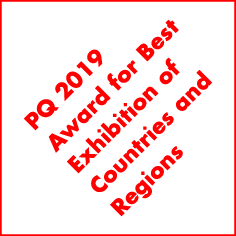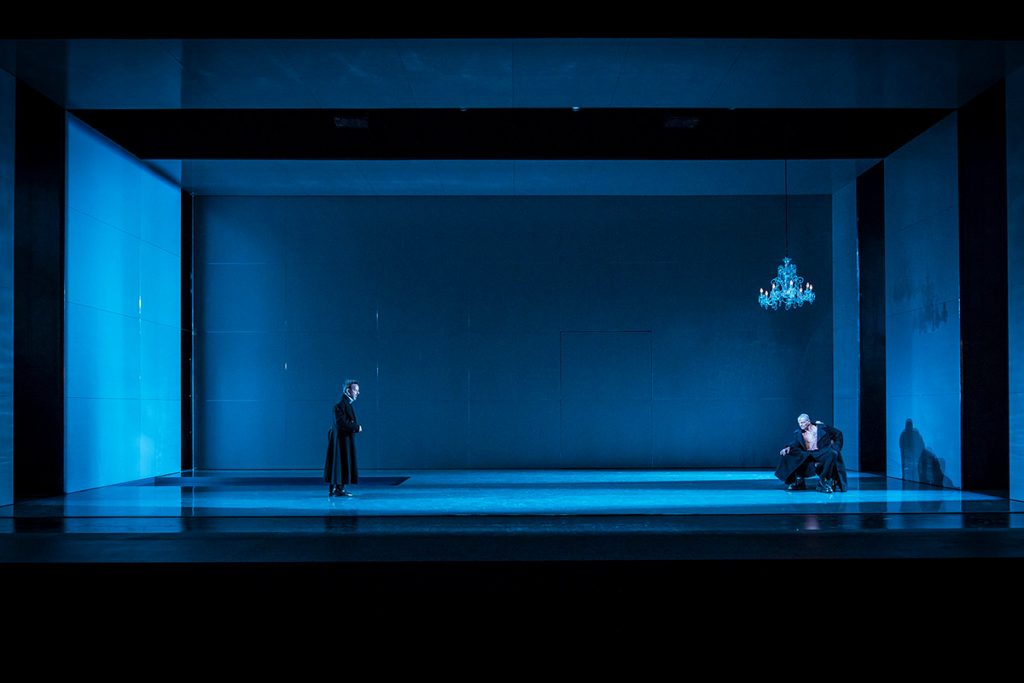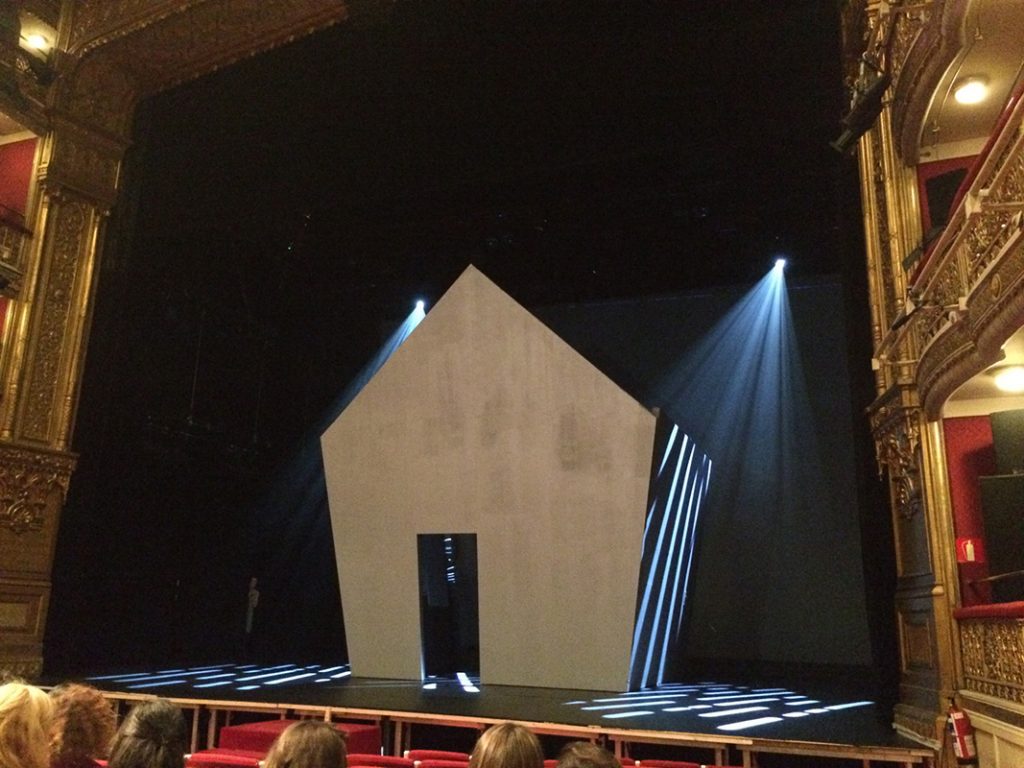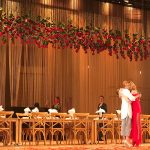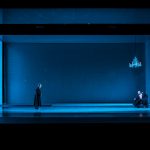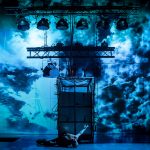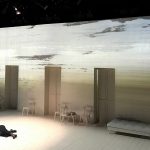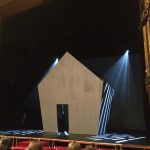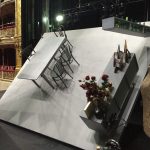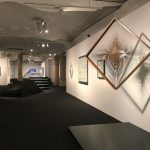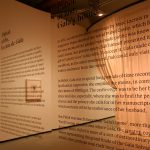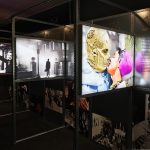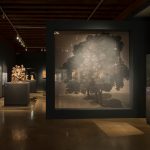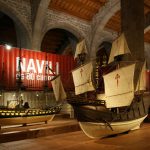The person that covered the walls of the CCCB with swarms of Sebaldian black butterflies1 and filled the rooms of the Arts Santa Mònica with constellations of lights and shadows to accompany the sound textures of Brian Eno2 prefers to avoid overly restrictive classifications when defining herself and describes herself as a “translator of contents”. Born in Vic in 1972, Anna studied Interior Design at EINA but moved into scenic design because, as she says, “it is more entertaining if behind a project there is a story.” After completing her studies in Scenography at the Institut del Teatre, she developed a varied and extensive professional career in theatres and museums, while also dedicating herself to scenic and exhibition design.
The blurring of the border that usually separates these two fields became the name of the studio Anna founded in 2010 and where, since then, she has carried out her projects: Espai e. As she tells us with a smile, this mysterious “e” represents her desire to not restrict herself to just one kind of space. “The e,” Anna tells us, “could be exhibitional, ephemeral, ecological…” And we have the feeling that she deliberately leaves the list open. Anna confesses that, when she was a student, “I wanted to be the best scenographer in the world.” During her time in Paris (where she studied the post-graduate degree in Art
Direction at the École Nationale Supérieure des Arts Décoratifs), she realised that for her it made no sense to constantly contemplate her navel, and that she wanted to live more peacefully and not aspire to be the best scenographer in the world. Looking at the projects she has developed since then gives you the feeling that many decisions, not only life but also aesthetic, come directly from this early personal resolution. Contrary to the idea of genius and creation, Anna constantly talks about research, exploring contents, and teamwork; far from any desire to stamp a style on her projects, she opts for simplicity; rather than ostentation and spectacle, for ecology and sustainability, and she values the choice of recyclable materials and waste reduction the hallmark that characterises her work, and how she understands it.
However, her projects reflect an unambiguous personality. If we had to choose just one adjective to describe Anna’s studio, this would be without doubt “open”. An adjective that stays with us as we review the projects she has carried out since 1997, both in the theatre field (where she has worked above all with Carlota Subirós and Carme Portaceli) and in exhibitions (with multiple projects for CaixaForum, at La Pedrera or the TNC foyer). The size of the space, the emphasis on atmosphere and the choice of a very limited number of colours and materials (if not just one) are frequent denominators of her designs. Very often it is the multiplication of a single element that finally shapes an entire exhibition apparatus, in which a given object serves, at the same time, as support for the materials exhibited, as a landscape and as an organiser of the space, whether they are construction barriers,3 metallic Meccano structures4 or goods containers5.
We suddenly realise that we have been so carried away talking about exhibitions that we have almost forgotten theatre. Anna assures us, especially in project phase, that they are two almost identical worlds. The main differences she highlights is that they have nothing to do with creation tools or processes, but above all with cultural structures and policies; “the theatre is much more full of personalisms and fashions, it has a far smaller market and bad habits in the management of cultural facilities that, luckily, we don’t find in the exhibition field. Can you imagine yourself as the director an art museum that self-programmes?”
You can consult Anna Alcubierre’s projects on the Espai e website (only in Catalan):
www.espaie.cat
--
1 Sebald Variation, 2015. Centre de Cultura Contemporània de Barcelona. Design of the exhibition space jointly with Jordi Portell. Exhibition curated by Jordi Carrión.
2 Lightforms / Soundforms. Brian Eno, 2017. Arts Santa Mònica. Design of the exhibition space jointly with Jordi Portell. Exhibition curated by Lluís Nacenta.
3 Estat d’excepció. Canprosa l’any 1902, 2018. TNC foyer. Exhibition curated by Albert Arribas and Ferran Dordal.
4 El cinema és fantàstic! 50 aniversari del Sitges Film Festival, 2017. Filmoteca de Catalunya. Exhibition curated by Diego López.
5 7 Ships, 7 Stories, 2015. Barcelona Maritime Museum. Exhibition curated by Enric García and Mireia Mayolas.


